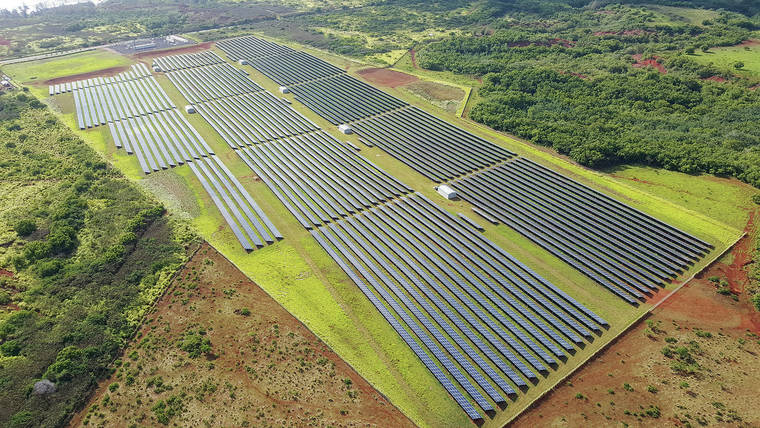The state Department of Hawaiian Home Lands is offering the use of four properties on three islands to developers interested in producing renewable energy.
DHHL is seeking to lease what could be more than 140 acres of its land on Oahu, Hawaii island and Molokai to renewable energy developers that would sell electricity to Hawaiian Electric and pay DHHL lease rent.
William Aila Jr., DHHL’s director and chairman of the Hawaiian Homes Commission, said the sites are among agency landholdings not suited for homesteading, and that lease rent will help the agency serve beneficiaries that include thousands of Native Hawaiians waiting for DHHL homesteads.
“Under my administration, the department has and will continue to seek creative ways to serve our beneficiaries,” Aila said in a statement. “Renewable energy is a way for DHHL to generate revenue from rural lands that cannot be used for homesteading either due to their remote locations, lack of infrastructure, or lack of water. We can then deploy that revenue into building new homesteads for applicants on the waiting list.”
Aila added that renewable energy projects resulting from the effort could provide existing homestead lessees the ability to pay less for electricity.
The lands available for lease are an undetermined portion of 448 acres in Nanakuli on Oahu, up to 20 acres of a Hoolehua site on Molokai, a 20-acre site in Kawaihae on Hawaii island and up to 100 acres in Kalaoa on Hawaii island.
More details are available at dhhl.hawaii.gov/procurement Opens in a new tab.
A deadline to submit proposals is 2 p.m., Oct. 16.
The Hawaiian Homes Commission approved soliciting proposals at its August meeting.
DHHL said an environmental assessment, beneficiary consultation and public hearings will be part of the leasing process prior to any lease execution.
Also, projects would have to be approved by Hawaiian Electric and the state Public Utilities Commission.
Hawaiian Electric is seeking up to 235 megawatts of renewable energy from developers on Oahu, Maui, Hawaii island, Molokai and Lanai through a second phase of a program it calls community-based renewable energy.

